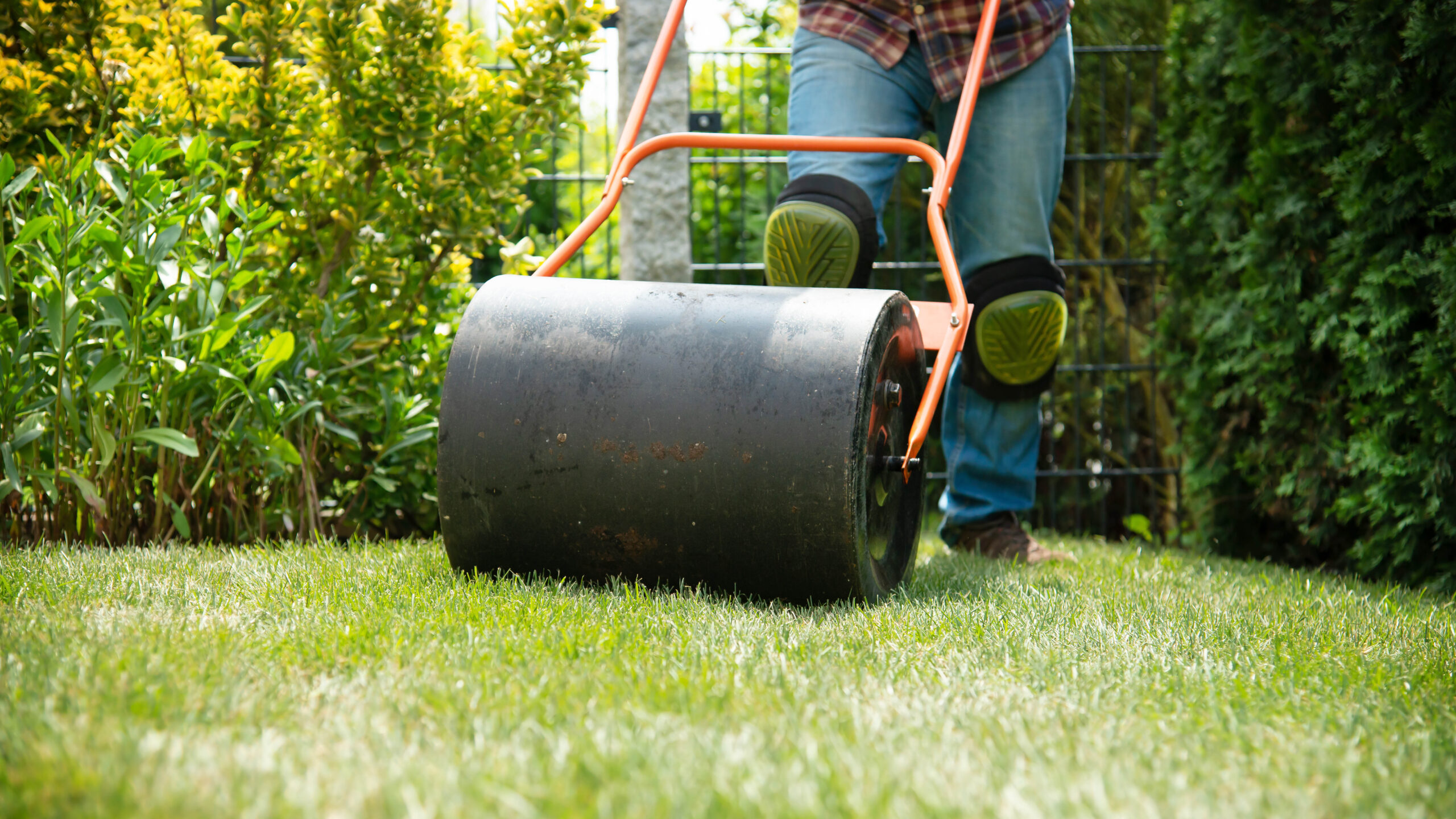The Complete Guide to Lawn Rolling: When It Works, When It Doesn’t, and How to Do It Right
Why Homeowners Consider Lawn Rolling and What You Should Know Before You Start
A perfectly flat, carpet-like lawn is often seen as the pinnacle of residential landscaping. This pursuit of perfection leads many homeowners to consider lawn rolling—the practice of using a heavy cylinder to flatten the surface of their turf. But does this common practice deliver the smooth, professional results many hope for, or could it potentially cause more harm than good to your carefully cultivated grass?
This guide explores the science behind lawn rolling, examines when it’s beneficial versus potentially damaging, and provides practical advice for those considering this lawn care technique. Whether you’re dealing with winter frost heave, newly seeded areas, or simply chasing that golf-course perfection, understanding the proper approach to lawn rolling can make the difference between improved turf and long-term soil problems.
Why Use a Lawn Roller: Understanding the Purpose and Potential Benefits
Lawn rolling is often seen as a straightforward solution for achieving a perfectly level lawn, but the practice comes with important nuances that homeowners should understand. Traditionally, a lawn roller is used to level out the surface of soil upon which grass is grown. These tools typically consist of a heavy cylinder filled with water or sand that can be pushed or pulled across your lawn.
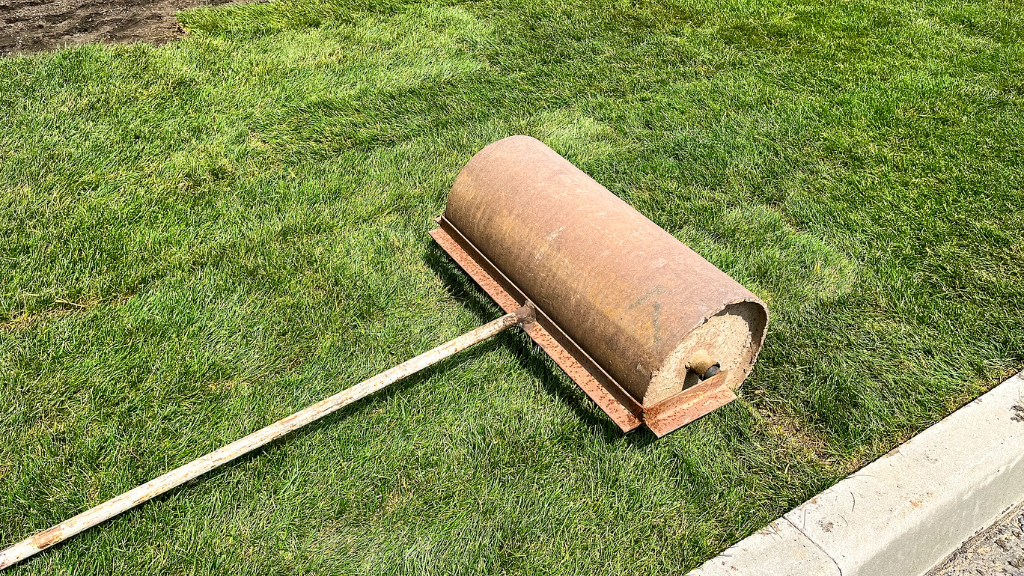
The Primary Benefits of Lawn Rolling
When used correctly and in appropriate situations, lawn rollers can provide several meaningful benefits:
1. Establishing New Seed and Sod
Lawn rolling is most beneficial when laying sod or seeding to improve sod and seed contact with the soil. This is perhaps the most universally accepted use of a lawn roller among horticultural experts.
When you roll your lawn after seeding, it helps press the new seeds into the soil, which provides several advantages:
- Better protection from birds and wind
- Improved seed-to-soil contact for faster germination
- Higher germination success rates
Similarly, after installing new sod, a lawn roller helps remove air pockets and improve sod-to-soil contact. This tightly presses the sod into the soil, giving the roots immediate access to moisture, which helps the sod establish more quickly in its new location.
2. Repairing Winter Damage
After a turbulent winter, when fluctuating temperatures have caused soil heaving, rolling can be beneficial. The freeze-thaw cycles common in many regions can push soil upward, creating an uneven surface that’s both unsightly and potentially hazardous.
It very often happens that irregularities develop in the height of your lawn, and if these aren’t smoothed out in the spring when the ground is still moist and pliable, those irregularities can be locked in for the entire summer and fall, as the ground dries and hardens into place.
3. Addressing Animal Damage
Lawn rollers can help repair damage after moles or ants have invaded your yard. A heavy lawn roller can compress tunnels and hills, helping to eliminate air pockets that would dry out the roots of your grass. While this doesn’t address the underlying pest problem, it can help restore your lawn’s appearance after you’ve dealt with the infestation.
4. Creating Sports-Quality Surfaces
For homeowners looking to create playing surfaces for activities like croquet, golf putting practice, or lawn bowling, lawn rolling is also beneficial if you are making a playing turf for putting, croquet or cricket. The smooth, level surface created by proper rolling supports these recreational activities better than an uneven lawn.
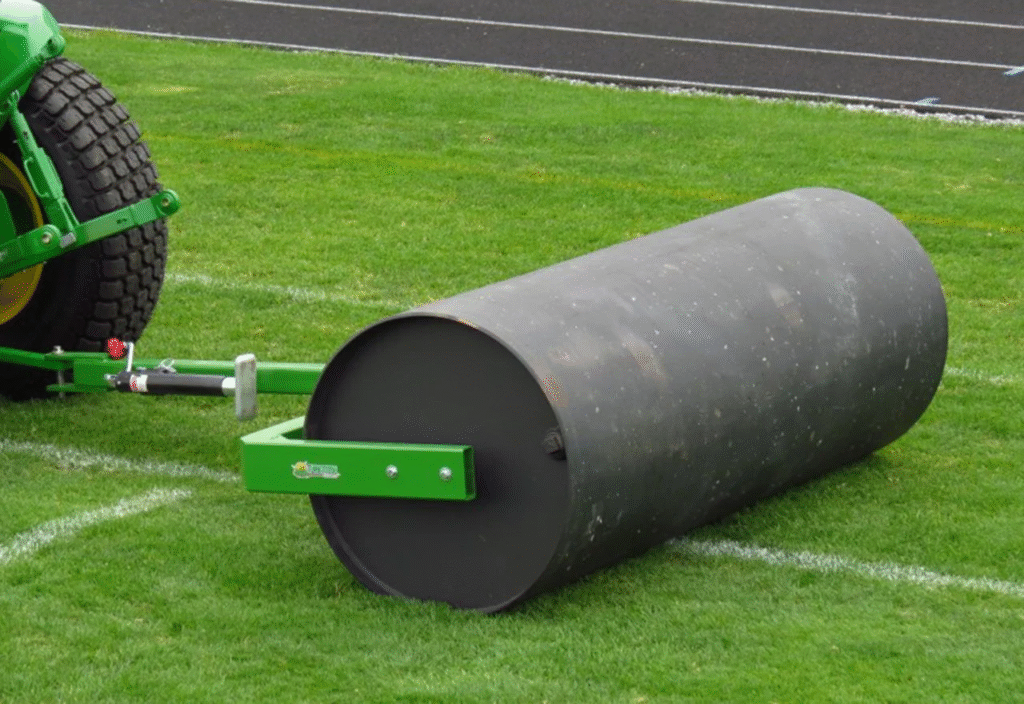
Do Lawn Rollers Really Work?
The effectiveness of lawn rolling varies significantly based on several factors:
Soil Type Matters Tremendously
National Greenhouse director and lawn care expert Ian Grant argues that “Rolling your lawn isn’t necessary for most domestic gardens. Rolling your lawn could cause damage to your grass. I suggest leaving the rolling of lawns to sports teams.”
This perspective is particularly important if you have clay soil. Homeowners with clay soil, which is particularly prone to compaction, should be especially judicious in their use of lawn rollers, as noted by master gardener Erin Schanen.
Timing and Moisture Conditions Are Critical
The success of lawn rolling depends heavily on proper timing:
Roll during spring after all frost has passed. Roll when the weather is at around 50 degrees Fahrenheit when grass first emerges from dormancy. Roll when soil is moist but not wet. Roll before mowing season begins.
Ensure the ground is damp but not soaked. Light moisture can help soften the soil and increase the impact of the roller, while a soaked lawn will encourage soil compaction, making it difficult for the grass roots to absorb the proper amount of water and nutrients.
For addressing uneven, bumpy terrain, it’s best to roll in the springtime, just when the grass is about to hit its seasonal growth spurt. Don’t roll in the summer – as the heat is already stressing the turf out as it is.
The Weight Factor
Use a lightweight water-filled roller so weight can easily be adjusted depending on the amount of water used. Start by filling only about a quarter of the roller with water and do a test run to see if this is sufficient to smooth out bumps. If not, gradually increase the water until you find the right weight, one that is enough to smooth the bumps but not compact the soil.
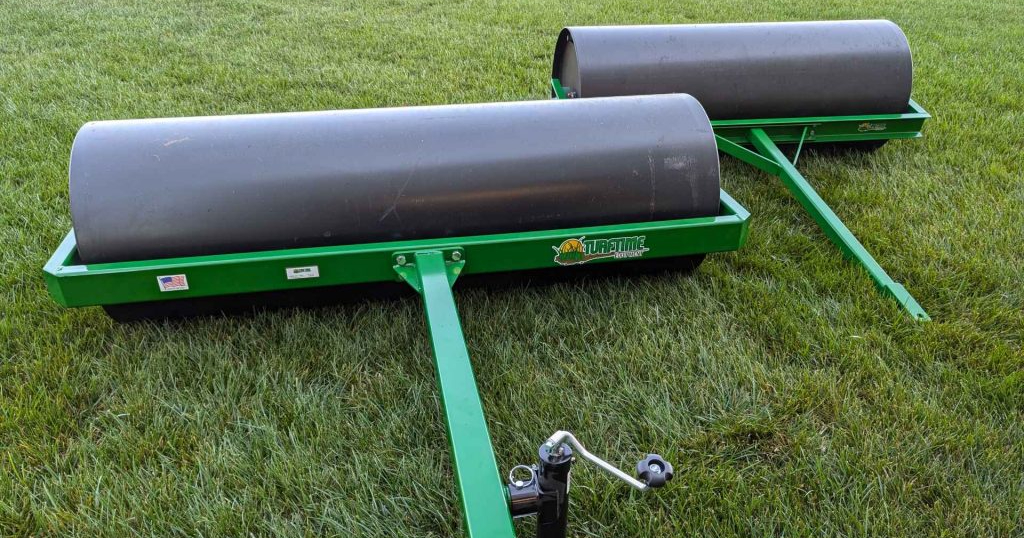
The Potential Drawbacks of Lawn Rolling
Despite its benefits in specific situations, lawn rolling comes with significant potential drawbacks that every homeowner should consider:
Soil Compaction Concerns
Lawn rolling may compact the soil too much in already dense areas. Excessive compaction can restrict root growth and reduce water infiltration. This is perhaps the most significant concern with lawn rolling.
As you might assume, rolling a lawn also compacts the dirt beneath the grass which, in turn, prevents water from penetrating the soil and causes runoff, which takes with it any amendments from the turf and into the nearby sewer system. So instead of being beneficial, lawn rolling in the spring causes stress right off the bat at the beginning of the growing season.
Limited Effectiveness for Many Lawn Issues
When naturally raised areas or low, shallow dips are part of the terrain, lawn rolling won’t repair these problems. If grub infestations, moles, and other tunneling or digging rodents are the culprits, rolling the lawn won’t fix these problems either.
In other words, rolling addresses symptoms rather than causes for many lawn issues. For more significant irregularities, pests will continue to burrow and dig unless they are eradicated and natural irregularities must first be repaired by adding or removing soil.
Grass Type Considerations
The type of grass in your lawn affects how well it responds to rolling. Cool-season turf grasses with deep roots stand up better to rolling than warm-weather types that spread through rhizomes. Before rolling, it’s important to understand what type of grass you have and how it might respond to compaction.

Professional Lawn Rolling Services Near Me
For homeowners who believe lawn rolling would benefit their property but don’t own the equipment or prefer professional expertise, lawn rolling services are available in many areas. These services typically offer:
- Professional-grade equipment with appropriate weight for your lawn type
- Experienced operators who understand proper rolling techniques
- Combined services like aeration to counteract potential compaction
- Seasonal timing expertise to ensure rolling happens under optimal conditions
When searching for “lawn rolling service near me” or “lawn rolling companies near me,” consider:
- Requesting references or examples of previously completed work
- Confirming that the service uses appropriate equipment for your lawn size and type
- Asking about their approach to preventing soil compaction
- Inquiring whether they offer complementary services like aeration that might be performed after rolling
If you decide to hire a professional, timing your service for early spring when the soil is moist but not soggy will typically yield the best results. Most lawn care companies offer rolling as a standalone service or as part of a comprehensive spring lawn care package.
Best Practices for DIY Lawn Rolling
If you decide to roll your lawn yourself, following these guidelines will help you achieve the best results while minimizing potential damage:
Equipment Selection
On most residential lawns you don’t want to use too heavy of a roller. A lightweight roller is usually enough to accomplish the task. A light lawn roller, half filled water roller, or a pedestrian lawn mower roller can be used to firm top dressing and roll after seeding.
Preparation and Timing
- Roll the lawn when it is damp, not soaking wet. This typically means rolling a day or two after rainfall, when the top layer of soil has dried somewhat but remains pliable.
- Roll during spring after all frost has passed. Roll when the weather is at around 50 degrees Fahrenheit when grass first emerges from dormancy.
Proper Technique
Walk behind the roller at a normal pace. Avoid applying downward pressure on the handles, allowing the cylinder to do the work. Roll in straight lines, slightly overlapping each pass to ensure even coverage. For larger lawns, consider making passes in perpendicular directions for more uniform results.
Post-Rolling Care
You should not roll your lawn more than one time per year, as it can compact the soil and damage the grass. After rolling, monitor your lawn for signs of stress or reduced water penetration. If you notice that water tends to pool rather than absorb, consider aeration to relieve compaction.
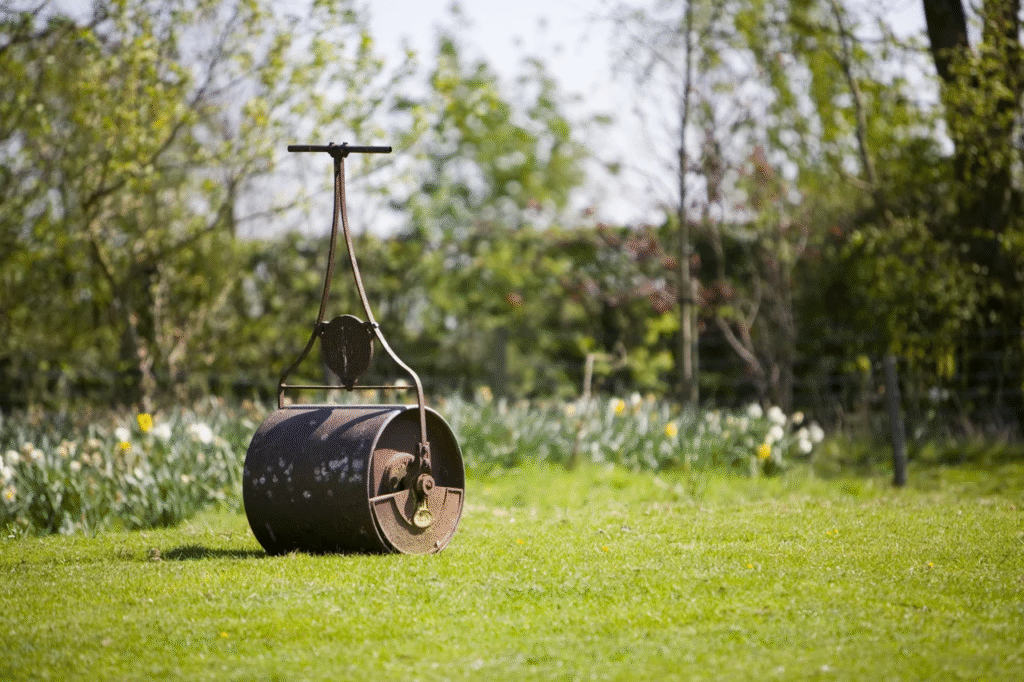
The Verdict: When Rolling Makes Sense (And When It Doesn’t)
Based on horticultural expertise and scientific understanding of soil health, lawn rolling is best viewed as a specialized technique rather than a routine maintenance practice.
When Rolling Is Beneficial:
Use a lawn roller after you seed or sod the yard, after cold winters which caused soil heaving, and to correct small bumpy areas of the lawn. Lawn rolling is also beneficial if you are making a playing turf for putting, croquet or cricket.
When Rolling Should Be Avoided:
Other than for these reasons, avoid lawn rolling. This straightforward advice from gardening experts recognizes that the potential for soil compaction often outweighs the aesthetic benefits for most home lawns.
Alternatives to Traditional Lawn Rolling
If your primary goal is a smoother, more level lawn, consider these alternatives that may address your concerns without the compaction risks:
- Topdressing with compost or soil mix – Gradually fill low spots with thin layers of appropriate soil mix, allowing grass to grow through between applications.
- Core aeration followed by topdressing – Remove small plugs of soil to relieve compaction, then lightly top dress to gradually level the surface over time.
- Targeted filling for specific low spots – Rather than rolling the entire lawn, address individual depressions by adding soil mix directly to those areas.
- Regular, proper mowing practices – Consistent mowing at the correct height for your grass type can reduce the appearance of minor irregularities.
Conclusion: Making the Right Choice for Your Lawn
The decision to roll your lawn should be based on a clear understanding of both your lawn’s specific needs and the potential impacts of rolling.
Rolling makes the most sense when establishing new seed or sod, addressing moderate winter damage in early spring, or creating specialized playing surfaces. In these limited circumstances, using a lightweight roller when soil is properly moist can provide meaningful benefits.
However, for general lawn maintenance or addressing significant irregularities caused by underlying issues, alternative approaches that don’t risk soil compaction will often prove more beneficial in the long run. The goal of any lawn care practice should be to support healthy soil structure and vigorous root growth—the true foundations of a beautiful lawn.
By understanding when rolling is appropriate and when it might cause more harm than good, you can make informed decisions that support the long-term health and beauty of your landscape.
